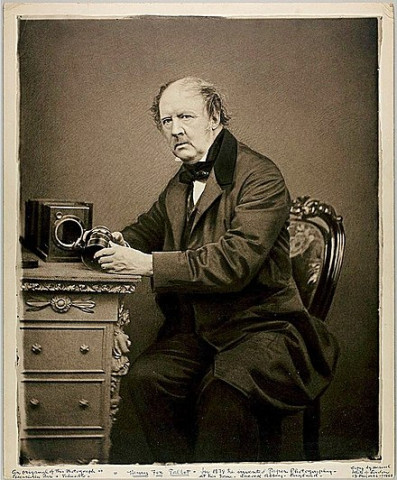
Photographers
Henry Fox Talbot
1800 — 1877
Henry Talbot was an English polymath - a person whose knowledge spans a substantial number of subjects. His interest in photography led him to invent the salted paper and calotype process, also called talbotye, in the 1830s. In this technique, a sheet of paper coated with silver chloride was exposed to light in a camera obscura. A camera obscura is a darkened room with a small hole or lens at one side through which an image is projected onto a wall opposite the hole. Those areas hit by light became dark in tone, yielding a negative image. Talbot devised several ways of chemically stabilizing his results, making them sufficiently insensitive to further exposure that direct sunlight could be used to print the negative image produced in the camera onto another sheet of salted paper, creating a positive.
Talbot's later photographic work was concentrated on photomechanical reproduction methods. In addition to making the mass reproduction of photographic images more practical and much less expensive, rendering a photograph into ink on paper, known to be permanent on a scale of hundreds of years, thus avoiding the problems with fading that had become apparent in early types of silver image paper prints. Talbot created the photoglyphic (or "photoglyptic") engraving process, later perfected by others as the photogravure process.
In 1839, when he learned of Louis Daguerre and his means of recording camera pictures with precision on metal plates he spent much time working on his processes. In 1841 he applied for a patent on his Calotype Process where the paper was first washed in nitrate of silver then with potassium iodide forming sliver iodide. He thus became the creator of negative-positive photography.
In 1842, Talbot received the Rumford Medal of the Royal Society for his photographic discoveries.
Last Updated on: 2024-02-28
